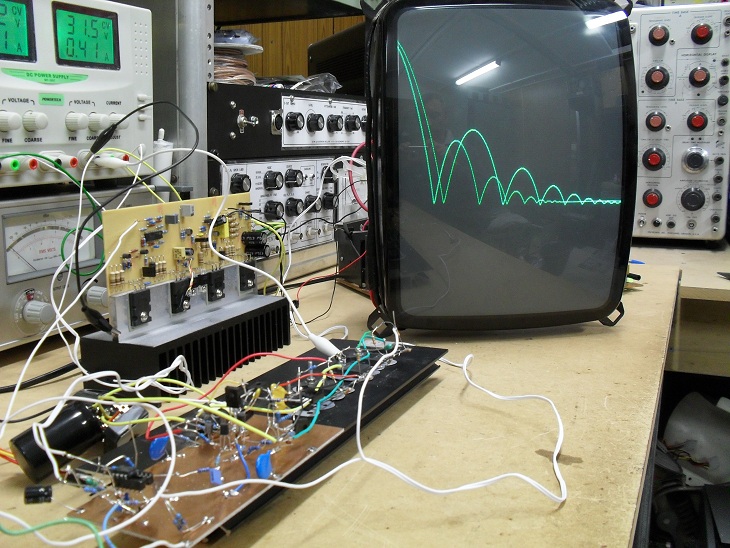I needed a break this evening from doing PCB layouts for this huge project and decided to fire up the soldering iron instead. I couldn't wait until all the boards are etched so I quickly knocked up a "dead bug" version of the vertical deflection coil current amplifier (the mess in the foreground of the attached picture).

I decided in the end to orientate the CRT vertically. It's looks way cooler this way when simulating and plotting missile trajectories and like stuff. However there is also a sound technical reason. The vertical deflection coil(s) has a great deal more inductance and a much lower self-resonant frequency than does the horizontal deflection coil. In the end I had to frequency compensate the vertical coil driver amplifier for a small signal bandwidth one tenth that of the horizontal coil driver.
In a display such as this, vertical bandwidth is much more important than horizontal bandwidth. The horizontal bandwidth just has to accommodate the horizontal sweep/repetition rate; and that only needs to be quick enough for a flicker-free display.
So, by flipping the CRT on its side, the slow vertical deflection becomes the horizontal and the fast (comparatively) horizontal deflection becomes the vertical. There was of course another option - I could have just rotated the yoke 90 degrees instead, but as I mentioned already, my preference if for the CRT on its side.
The attached pic shows the prototype monitor displaying my simulation of the trajectory of two bounding balls simultaneously (one ball a little heavier than the other and subjected to a larger constant for gravity). Tomorrow evening I will "dead bug" the colour gun multiplexing and get the individual ball trajectories showing in different colours (and perhaps modify the simulation to simultaneously compute another ball trajectory or two).